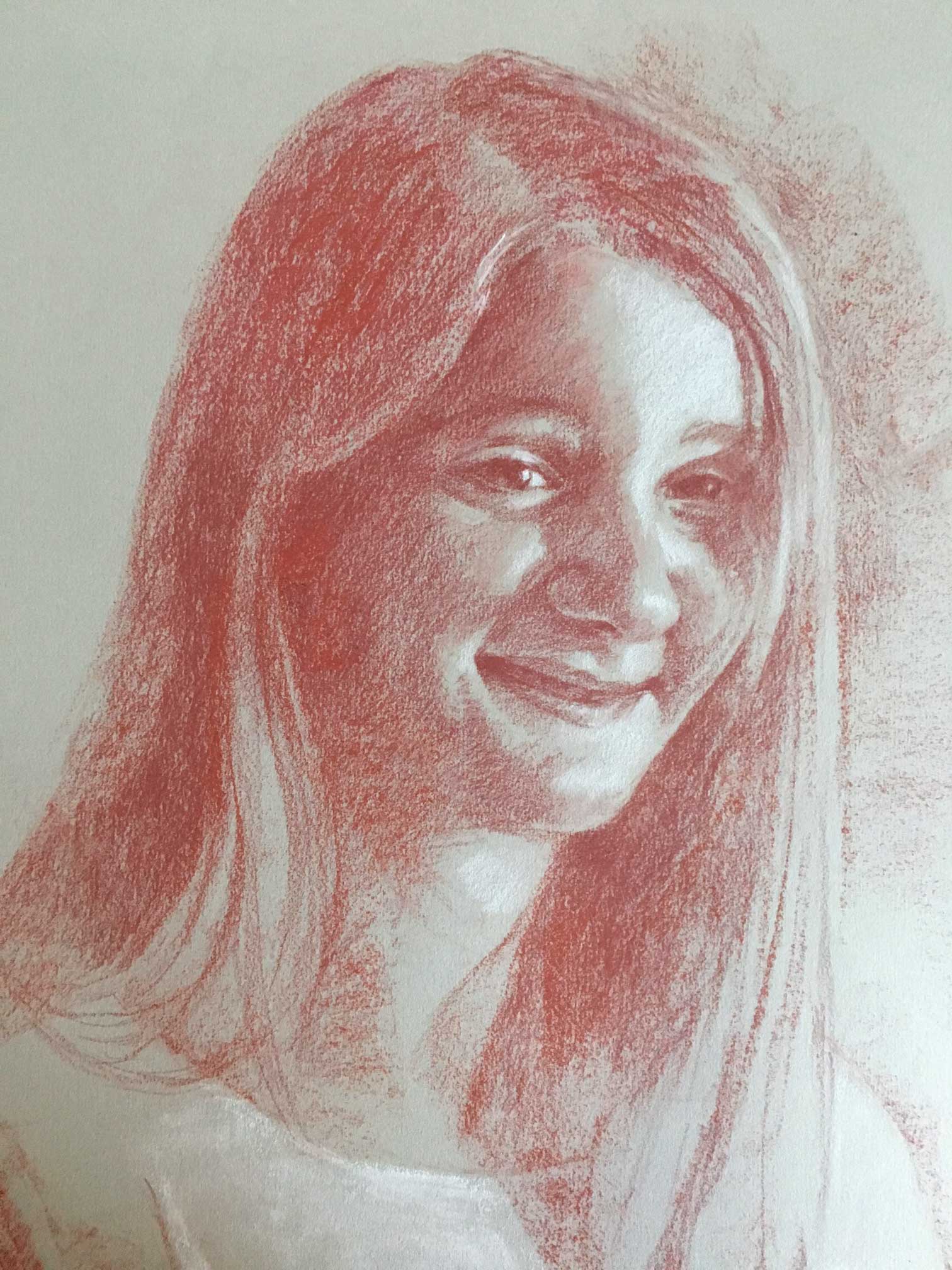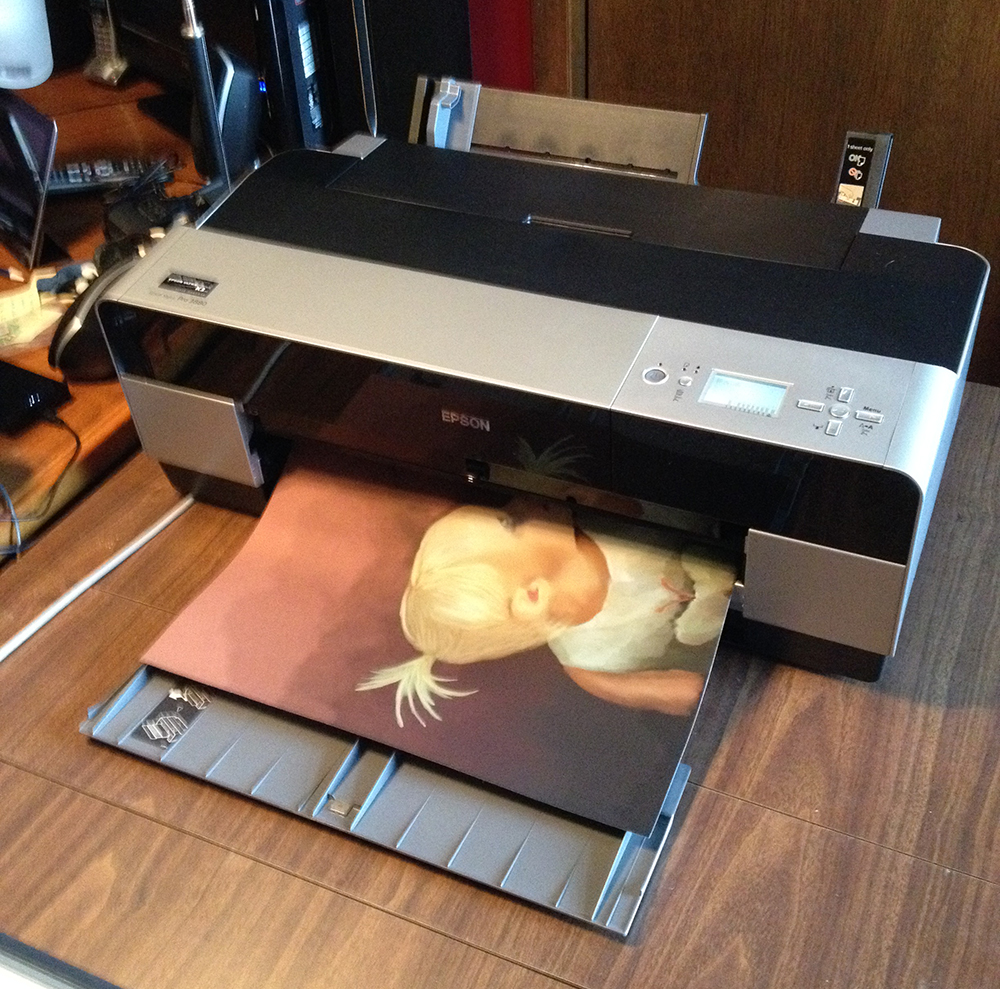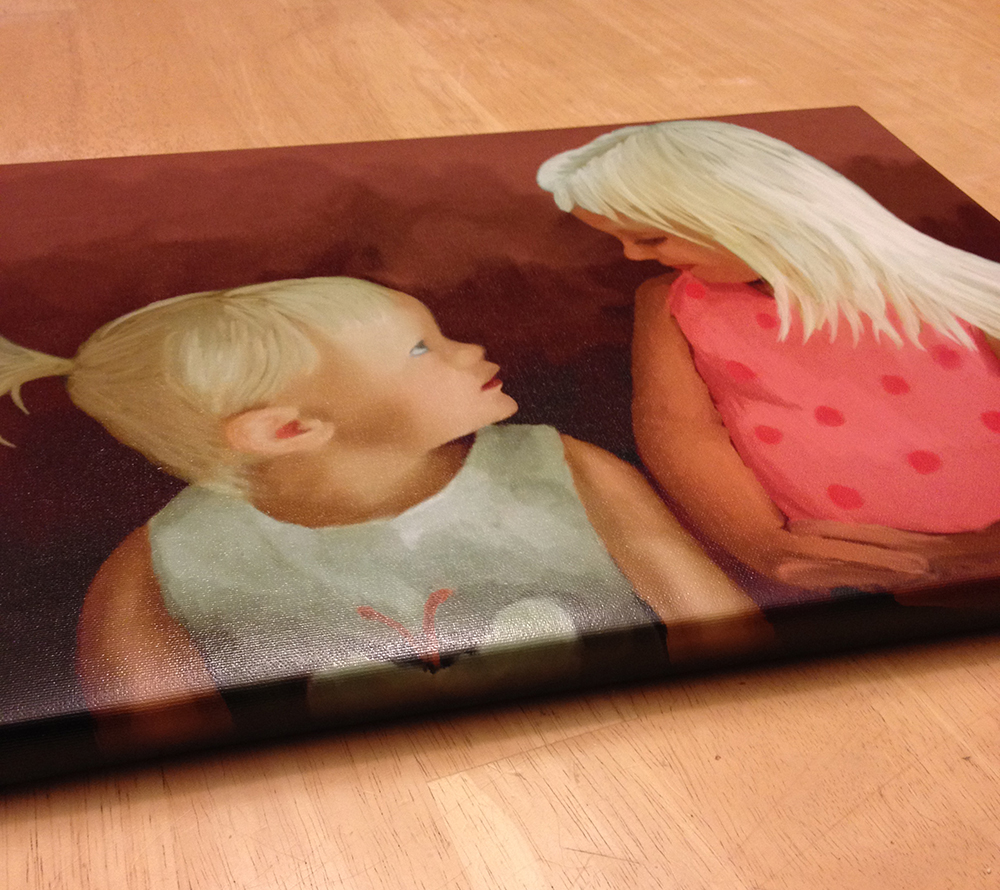Portrait commission
-
Ongoing portrait commission - the first since more than a year....
Always wonder wether I should be doing this type of work at all...

-
Looks nice!
What makes you wonder whether you should do this kind of work? Workload vs. money not a good ROI? Taking too much time away from desired efforts? At the very least, it is great "practice".
-
@QuietYell It is just not very interesting to do..and it is a big hassle in my small studio, which is designed for digital work. And I miss the "undo" button sorely ;-))
...but yes, it is good practice. The money is actually pretty good for the amount of work. -
@smceccarelli haha yes I am an undo addict too! Have you ever caught yourself doing something in "real life" and made a mistake (like pouring too much liquid or something) and then thought "oh no, undo" and realize that maybe you spend too much time on the computer?! Shamefully, I do that all the time! haha
-
@QuietYell Oh yes, very often!! I also tap with two fingers on my sketchbook (the iPad "undo")....shame on me. When I do that I always think that I should go back to doing traditional work!!
-
@smceccarelli hah yep!
Is there any possibility of doing this type of work digitally? (e.g. only accepting digital portraiture) I know most people probably want an actual physically painted piece...
-
@QuietYell Definitely this family wants the physical drawings. It's two twin sisters (not identical - actually they are very different).
I have never done digital portraits. Who would want that? I always toy with the idea of doing caricature for editorial though...but I am not sure I would enjoy that. -
@smceccarelli mm understood.
It sounds to me that the real deal killer here is that you find this work uninteresting and mentally/emotionally unfulfilling. (I would be the same way) I would assume it is because it doesn't tend to be so imaginative and doesn't tend to have much narrative/story or concept, correct?
-
@smceccarelli - I totally understand where you are coming from as I do not find them fun or interesting to work on either.
That said, you could definitely do a digital portrait in a painterly style. The key is to then have it printed onto canvas, glazed and mounted over a frame like a traditional painting would be. They turn out really nice as I have done this in the past a few times.
And best of all since it is then digital more than one can be created. So in the case of having twins in one image - they could both have their own copies to keep etc.
Some Epson printers allow for printing onto canvas. Or there are some great services out there that print onto canvas and mount them etc.
-
I did this a few years ago (so don't judge my skills - I have come a long way since then).
But just to show you how it can be printed on canvas and what it looks liked after its glazed and wrapped onto a frame etc.


-
@Rich-Green oh wow - you put canvas through your Epson and didn't use a service bureau or other printing service? I didn't realize that could be done. Do you mind sharing the type of paper, printer, glaze and any other things (and maybe where to get them if they are special)?
-
Sure - I have an Epson Stylus Pro 3880 printer. The key is you need a printer that has waterproof ink so that you can paint, glaze etc over it as needed.
This printer can take all kinds of different papers and in this case I used Epson Exhibition Canvas Matte from their Signature Worthy Professional Media line. They sell it in various sizes I used the largest size my printer could accept which was 17 inches x 22 inches.
The most challenging part of this process the first time was getting the printer to feed the canvas properly - I kept having it reject for being crooked. You can of have to help it along with your hands. Once I got the hang of it I can do it easily now. But it was definitely tricky the first time - took me many many tries! LOL
I did a bunch of research on canvas printing and then the varnishing at the time from info on the Epson site and then some other forums and things I had found.
Here is a link to the PDF that Epson puts out on canvas top coating: https://www.epson.com/_alfresco/proimaging/media/EPSON_Exhibition_Canvas_Printing_and_Finishing_Guidelines.pdf
I used Premier Art Gloss Eco Print Shield which I purchased from a company called Atlex (who I also get my papers and other supplies from when I need them). Here is a link to the product on their site just for reference.
http://www.atlex.com/premierart-gloss-eco-print-shield-gallon-2.html
You have to let the print dry 24 hours, then you begin applying your top coat varnish layer (or layers depending on your desired look). This Premier Art Gloss I used gets mixed with water and goes a really long way as you only need to apply very thin coats, so FYI.
After that has dried the recommended amount of time, you can then wrap it around the wooden frame (which I made using supplies from Dick Blick but you can also get them at places like Michaels if that is closer to where you live for example).
Epson has a video that shows canvas wrapping that I found helpful as I had not done that part of the process before either. It is here:
http://www.epson.com/cgi-bin/Store/Video-Library/video/Professional-Imaging/Epson-Canvas-Wrap-Demonstration/1450345356001 -
@Rich-Green How do you position this towards customers? I mean, it is not an oil painting, it is more like a print.
I know of an artist (I forgot his name now) who does digital painting, then prints on special coated paper and repaints the whole thing in oils on top. So he sells that one as an original oil painting to collectors, while the digital copy goes to the publisher who commissioned it (he does book covers)....
Not sure I want to go down that road. But printing on canvas sounds awesome by itself, for example for transferring sketches and/or value studies! -
@QuietYell Absolutely correct. It is observational drawing, which is good for practice and makes you better at imaginative drawing, but is not as challenging or exciting as imaginative stuff.
-
@smceccarelli - completely agree - definitely not an actual oil painting. I too have seen other artists who embellish over a print on canvas with traditional paint to give depth and texture etc. So like a hybrid of the two.
I do not do these portrait type pieces or commissions anymore as I did not enjoy them and I was not charging enough for the time and materials involved - I have learned my lessons there.
But like you point out - having a printer with inks you can draw/paint/glaze over is really great and the possibilities become endless really.
Do you watch any of Jake Parker's videos - you may have noticed in some of his recent ones (and his facebook live videos etc). He will print out his sketch and then ink/color over the top of that. Here is a link to one his most recent ones - if you go to the 5 minute mark he talks about it a little bit: https://www.facebook.com/jakeparkerart/videos/1208379585879492/
-
@Rich-Green Thank you so much for such great info!
-
@Rich-Green Oh yes - it was a real eye-opener. I have been experimenting with that process (for example for the last third Thursday) and I like it a lot.
I am fascinated by mixing digital and traditional workflows. I had dabbed a bit into mixing pastel and digital when I was at school, and have been following other artists that mix digital and traditional. Justin Gerard has an awesome watercolor/digital hybrid process, where he does the value study in watercolor (on a digital sketch, printed on watercolor paper), then colors with transparent layers in Photoshop. He gets these very vibrant pieces, with the depth of digital painting but the texture of watercolors - and has the watercolor study as original art. I also like the look of traditional inks and pencils more than digital line - and I am thinking about experimenting with line-dominated styles....
Pity there is only one life.... -
Great thread, lots of interesting comments and beautiful portrait too!
@Rich-Green Thanks for sharing your art canvas method, very interesting to see! One day (when I have more space) I'd like a printer that can print on a wider variety of surfaces. I'm not surprised that you stopped doing those though, I can imagine that with all the printer set-up time, varnishing etc plus cost of materials and your time, it must be difficult to get enough money back to make it worthwhile.
@smceccarelli Oh I am fascinated with traditional/digital hybrids too...I'm pretty sure that's the way I'll end up working, I'm just not sure how yet....and I keep on experimenting to try and find out. I love the way traditional methods look, with the ink on paper and the textures...yet there is also so much to admire in digital pieces, with the sharpness and contrast, all the amazing brushes and the various layering techniques that you just can't do traditionally.
That's really interesting to hear about Justin Gerard's process, just been to his website, amazing work. I recently experimented doing my value layer in dark tones of watercolour, then scanning in to do digital colour on top...didn't quite work out the way I wanted, but it was good to try.
-
Maybe I'm missing something, but in my head, digital is just another medium. I believe that whether the portrait is drawn/painted digitally or traditionally does not matter that much - what you pay for is the artists interpretation of the face. If the artist can capture the expression, create a suitable mood and feel to the portrait - I think this is more important than how it was created. I find portraits fascinating, and would really like to get better at them.
-
@Camomilla Sure, digital is only another medium, you are right. But digital does not produce an original, whereas traditional does. A portrait client buys an original - he is not interested in prints generally. Also, you cannot really sell any rights to a portrait, unless is of a famous person for some editorial use - so you really only sell the original.